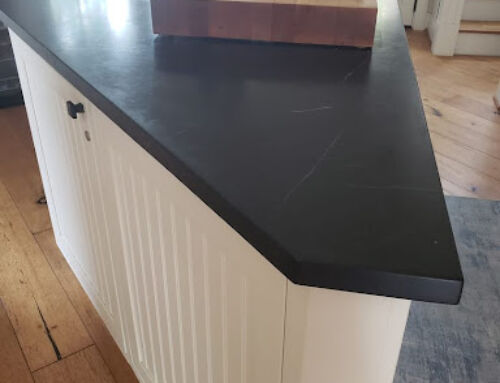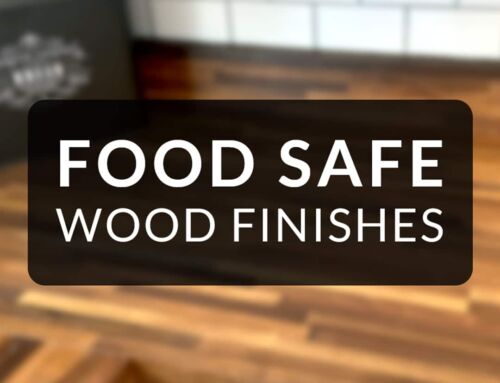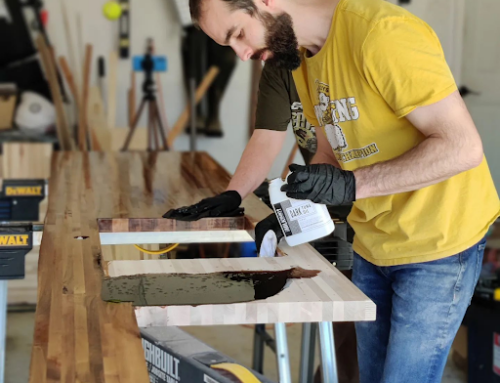While watching the pizza-making process at your favorite Italian spot, you’ve probably noticed a pizza peel but never knew what it was called. An essential tool for sticking pizza into ovens and pulling them out, pizza peels have a flat paddle board on one end and a long handle on the other, keeping you safe when dealing with high heat levels. If you’re in on the home brick pizza oven trend, you may already have a pizza peel. This guide provides you with all you need to know about them. Read on to learn about these tools and how maintaining and finishing pizza peels with food-safe oils from the Real Milk Paint Co. can keep them in service for years.
Types of Pizza Peels and Their Characteristics
Two types of pizza peels are the most popular: metal and wood. Both sides have excellent arguments for their preferred pizza peel and against the other, so let’s explore the characteristics of each type. Knowing the benefits and drawbacks of each helps you choose the best pizza peel for your kitchen or outdoor space.
Wooden vs. Metal Pizza Peels
When considering a wooden pizza peel versus a metal peel, the choice is yours. Both tools have advantages and disadvantages, depending on what you value most in your cooking space. Let’s look at the benefits of each food-safe kitchen tool to help you better decide when choosing between wooden peels and metal peels.
Pros and Cons of Each Type
Wooden Peels
Most often made from hardwoods like bamboo and beech, wooden pizza peels absorb moisture from pizza dough to prevent sticking. The smooth surface also works well when you’re handling delicate dough for thin-crust pizzas to prevent cases where the dough sticks. Aside from those considerations, a wooden peel has a traditional look that blends form and function for a stylish addition to your cooking space, but that comes at the price of durability. A wooden peel isn’t nearly as durable as metal, and frequent use shows on the wood surface without constant care and maintenance to prevent odors and remove food oils.
Metal Peels
Metal peels seem just the thing right out of the gate — they’re versatile enough to handle most any type of dough, tough enough to weather frequent use and simple to clean up with soapy water after use. This type of pizza peel, however, has some disadvantages. For instance, metal pizza peels don’t maintain moisture like a wooden peel, so pizzas may be challenging to remove from the oven when the dough sticks to your pizza stone. This is especially true of delicate, thin crusts that may get stuck when you slide them onto and off your oven’s pizza stone with metal peels.
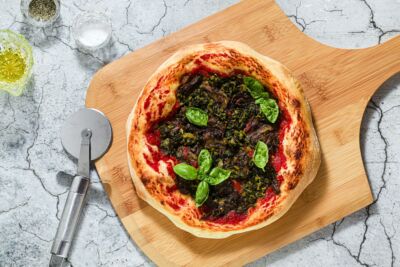
Preventing Warping and Damage of a Wooden Peel
When you choose a wooden peel over a metal one, keeping it in good shape ensures it’s always ready when you’re craving a pie. Use this guide to learn why damage occurs, how to prevent it and how to store your pizza peel properly.
Why Wooden Pizza Peels Warp
Washing your wooden pizza peel can lead to warping if you leave it damp. Soap and water can leach into the wood and compromise its outer coating, leading to cracks in the wooden surface with the potential to splinter when exposed to high heat. For that reason, dry your entire peel thoroughly, especially if storing it in an enclosed space without much air circulation, to let the wood surface properly dry.
Warping may also occur when you don’t regularly maintain your wood pizza peel with a high-quality finishing oil penetrating the porous wood surface deeply to provide reliable protection. Remember that mineral oil isn’t the best finishing oil for the job, so go with something like our food-safe Hemp Oil for easy reapplication after you wash and dry it to prevent your wood pizza peel from warping.
Tips to Prevent Warping and Damage
One of the best ways to prevent a wooden pizza peel from warping and incurring damage is to use proper drying techniques after washing and finishing the surface with food-safe oil. This means letting the peel air-dry in a horizontal position — propping it up vertically enables uneven drying that can make the board warp. Likewise, avoid placing it in areas with high humidity and let it cool down between uses. Lastly, never leave your wood peel inside the oven while waiting for your pizza to bake, as it’s simply not designed for prolonged exposure to high heat levels.
Importance of Proper Pizza Peel Storage
First and foremost, always store your pizza peel in a cool area, keeping it away from high-humidity areas such as near sinks and dishwashers. Before you put your peel away each time, inspect the board to see if it needs a coating of oil to prevent warping or damage. Stick with drying oils like Pure Tung Oil rather than applying mineral oil to the surface because drying oils cure by oxidation, reducing damage risks during use and storage. Lastly, consider a breathable protective cover for your peel to keep it free of dust and debris between uses.
How to Clean Your Pizza Peel
Proper cleaning is essential to keep your pizza peel working (and looking!) at its best. With that in mind, let’s discuss how to maintain your peel so it can slide dough easily onto and off your pizza stone without sticking to it whenever you put it in your oven.
Regular Maintenance Tips for Your Pizza Peel
The easiest way to keep your peel in great shape is to clean it after every use. Oils and particles typically stick to even the best-maintained wooden peels, but letting them sit on the surface after use worsens things. Instead, gently hand-wash your peel with mild soap, using a soft cloth or sponge to remove stuck dough and debris. Avoid soaking your peel, as too much moisture penetrating the wood can make it warp. Let it dry horizontally after washing, check it for damage and apply a coating of food-grade oil as preventive maintenance if needed.
Common Mistakes to Avoid in Peel Maintenance
As noted above, exposure to lots of moisture can cause your peel to warp, so wash and dry it immediately after use. Never use harsh detergents to clean the wood, and seal any damage by applying a food-safe oil to the surface as needed. Keep in mind that while mineral oil may seem like the best choice, it’s not. Even the purest mineral oil has contamination risks, whereas all-natural finishing oils like Pure Tung Oil contain only food-safe ingredients for a safer cooking experience.
Choosing the Right Finish for Wooden Pizza Peels
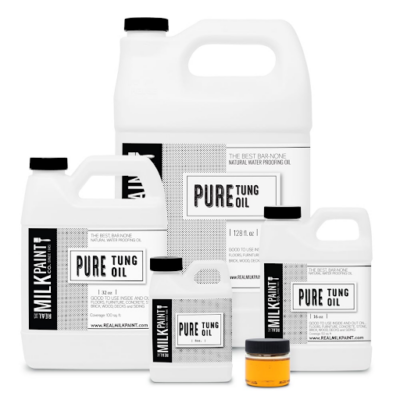 Pizza peels require the right finish for longevity and function, and when it comes to both, food-safe oils like Pure Tung Oil win out over mineral oil hands down. While tung oil confers great resistance to water, mineral oil doesn’t. It also doesn’t harden or penetrate deeply like tung oil. Lastly, mineral oil requires frequent reapplication, while tougher oil finishes like those from the Real Milk Paint Co. let you go longer between applications to your pizza peel.
Pizza peels require the right finish for longevity and function, and when it comes to both, food-safe oils like Pure Tung Oil win out over mineral oil hands down. While tung oil confers great resistance to water, mineral oil doesn’t. It also doesn’t harden or penetrate deeply like tung oil. Lastly, mineral oil requires frequent reapplication, while tougher oil finishes like those from the Real Milk Paint Co. let you go longer between applications to your pizza peel.
Types of Finishes for Your Wooden Pizza Peel
As noted above, some people use food-grade mineral oil on their wooden peel. Applying mineral oil to your board, however, has the potential to damage this essential tool. Instead, choose food-safe finishing oils from the Real Milk Paint Co. to protect and preserve your pizza peel. For example, our Pure Tung Oil penetrates deeply to reduce marring and is FDA-approved for food contact. It comes premixed with Citrus Solvent and is ready to use in our Half-and-Half formulation. If you have a decorative pizza peel coated with Real Milk Paint that you don’t use for food, our wood wax or soft wax are a great choice to get your choice of a dead flat, low sheen or matte finish.
How Finishes Affect the Wooden Peels and Pizza-Making Process
The finish of your peel affects the pizza-making process in several ways, including reducing the risk of stuck dough when you use a finish like Pure Tung Oil. Because finishes like mineral oil are constantly being removed through contact with food, you risk splintering the wood of your peel, potentially damaging your food. Likewise, a smooth tung oil finish lets your pizza slide seamlessly off your peel for easier food preparation.
Applying Finish to Your Wooden Pizza Peel: A Step-by-Step Guide
First, make sure your peel is free of dust and debris. Then, grab a lint-free cloth or natural bristle brush to apply the Pure Tung Oil to the surface. After application, let the oil absorb into the wood, and repeat the process over and over until excess oil stays pooled on the surface. Next, use a clean cloth to remove the excess oil and let your peel cure for 30 days to harden it properly via oxidation. Placing your tung oiled pizza peel in a warm place will speed up its curing dramatically.
Buy the Best Pizza Peel Finishes at Real Milk Paint Co.
Your pizza peel makes cooking home pies fun and authentic, and this essential tool functions best when protected by finishing oils from the Real Milk Paint Co. Our all-natural finishing oils are safe for food contact and simple to apply and reapply as needed to ensure the proper functioning of your wooden pizza peel.

